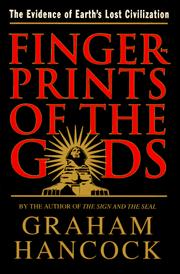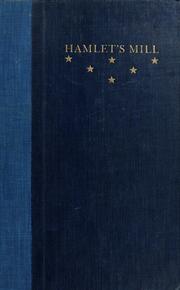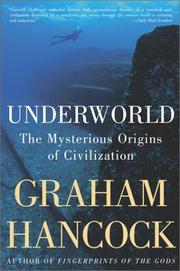📚 3 Books mentioned in "Joe Rogan Experience #2136 - Graham Hancock & Flint Dibble" of The Joe Rogan Experience

Podcast: The Joe Rogan Experience
Episode: Joe Rogan Experience #2136 - Graham Hancock & Flint Dibble
Published on April 16, 2024
Here’s a list of all the books mentioned in this episode. Click on the links to watch specific excerpts on YouTube and feel free to purchase the books if they caught your interest!

Fingerprints of the gods
Buy Fingerprints of the gods by Graham Hancock on Amazon
I've written a large number of books with thousands of footnotes; for those who'd like to evaluate my work, do check out the books. It can't possibly be sampled here, just as Flint's can't, on the basis of a three-hour show. But I think we've done well, and I believe there is some kind of meeting of minds. I like you as a person, but I hope we change our tones on both ends because, like I said, the tone you chose in that show was offensive to archaeologists.
Graham Hancock refers to his book, Fingerprints of the Gods, to illustrate that his ideas can't be fully captured in a single conversation on the Joe Rogan Experience.

Hamlet's mill
Buy Hamlet's mill by Giorgio De Santillana on Amazon
But these guys, Giorgio de Santillana and Hertha von Dechend in an amazing piece of work called 'Hamlet's Mill' strongly dispute that. And they suggest that we're looking at an extremely ancient knowledge of precession, a worldwide heritage of a lost civilization to which all subsequent civilizations in all parts of the globe, forgetful of the source of the precious legacy they received, are the ungrateful heirs. Giorgio de Santillana was a professor of the history of science at MIT. Hertha von Dechend was a professor of the history of science at Frankfurt University, so they're no lightweights. They refer to the fact that a series of numbers keep cropping up in ancient myths all over the world associated with imagery. And those numbers are all based on the number 72.
Graham Hancock references a book by Giorgio de Santillana and Hertha von Dechend titled 'Hamlet's Mill' when discussing knowledge of precession in ancient cultures. He uses it to demonstrate a point about processional numbers.

Underworld
Buy Underworld by Graham Hancock on Amazon
And these inundation maps he has given us are a very accurate representation, and those original maps, the ancient ones—how old are they? That's the 153 PIR Rees map, which was based on more than 20 older source maps. As he tells us in his own handwriting, we only have a fragment of the map; it's full of inaccuracies and problems. But I’m just, you know, what would convince me? So I used to do a lot of GIS for archaeological projects where I’d take historical maps and I’d try to line them up with actual terrain like satellite imagery and stuff like that? You should work on georectifying these maps to see how they line up in real space. Right now, what I see—I have to squint to see if it looks right or not. So I think working with something like a GIS expert to georectify this stuff and show how actually accurate it would be, where you could statistically measure that, would make it a lot more convincing in my mind. No, that’s a very good idea, Flint, thank you. Can we see images of the Bimini Road itself? I’ll show you a couple of slides if I can put this up.
During the episode, Graham Hancock discusses his book 'Underworld', focusing on the accuracy of inundation maps of the ocean floor. He highlights the collaborative efforts he made with a geologist to improve understanding of historical maps.
